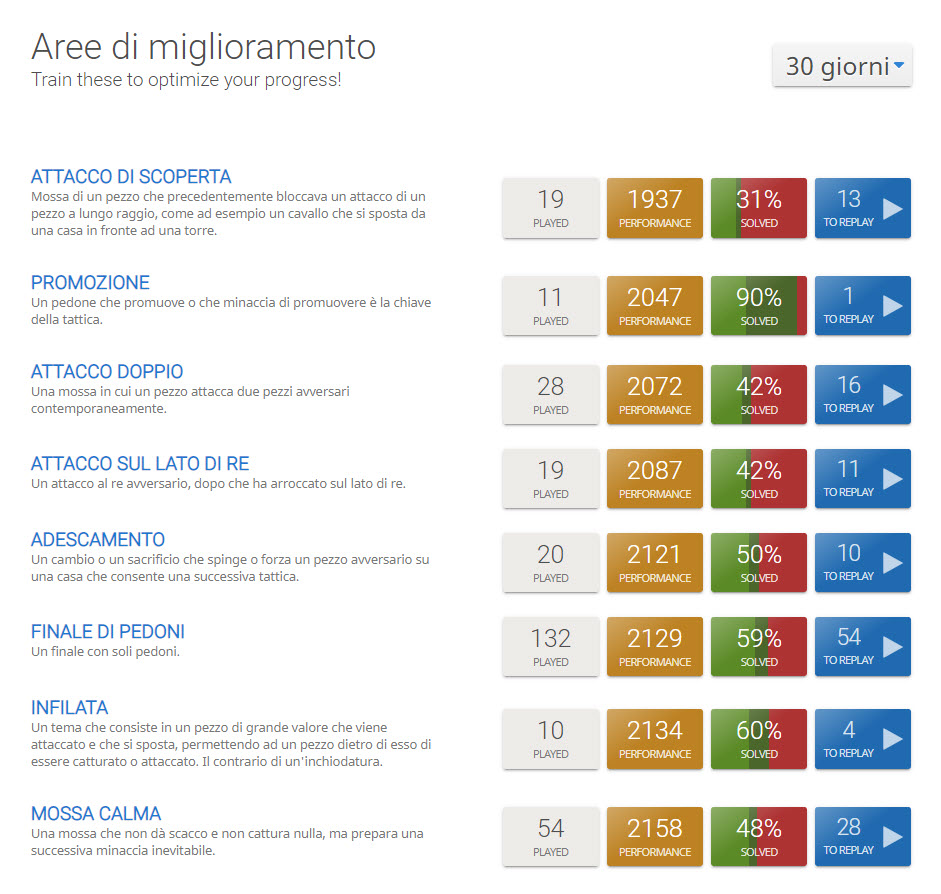One of the topics I find especially fascinating is how our self-identity influences our performance in different skills. In the case of chess, how does our self-image affect the way we play? Is it possible that our performance depends more or less on the identity we create as we train to get better?
The past week I had an interesting experience: when I set the ranking matching points lower than usual (to be matched with players of, say, -100 or -150 below me), I tended to play worse. And when I set it to -50 +150 or just +200 (or even +250), I tend to play better.

My hypothesis is that playing against stronger players helps me to see myself closer to them. I build the self-image of a strong player. If I play with weaker players all the time, that has a negative effect on my performance. I find it much more fun, challenging, and inspiring to play against stronger players. One could ask: “What’s the fun in getting your *ss beat all the time?“. Well, it’s not all the time (it’s just most of the time 😅). Maybe by choosing this matching method, I won’t win as many games as I could if I played against weaker players more consistently, but winning more is not the point. I prefer to win fewer games against stronger players than to win lots of them against weak players.
I find that the self-esteem boost you get after winning a game against a stronger player is worth the effort of being challenged most of the time. And when you lose games against equal or stronger players, you won’t beat yourself down (as you’d probably do when you losed against weaker players).
Also, if I hadn’t set the matching rankings as I do, I would have never beaten an International Master (IM). Most of them have rankings above 2300 points. By the way, later in the article, I share a game I recently won against an IM 😊.
The Weekly Practice (02/03/21 to 02/09/21)
This week I did: tactic themes on Lichess, fast tactics (Puzzle Storm), reviewed queen pawn structures and openings (Carlsbad and Grünfeld), rook ending videos, simplification exercises, and pawn endings tutorials on Chess.com.
Usually I divide the study session in two halves. In the first one I do two Puzzle Storms plus between 10 and 20 minutes of thematic tactics and/or videos of whatever ending I’m studying (this week I did pawn endings on Chess.com). During the other half hour I do more difficult tactics that take more time, plus other structured study (this week I continued with the rook ending videos recorded by GM Andrea Stella).
My study this week was not at the same hour each day, but roughly it was between 7pm and 10pm.
New Lichess Tactics Tools + Puzzle Storm
At the end of January Lichess revamped their tactics training tools. Now they are offering a comprehensive diagnose of your tactical skills based on the exercises you played on the platform (the tactics).
This is how it looks like (Puzzle Dashboard):


After observing my weak areas here I decided to train specifically on the following themes: deviazione, mediogioco, re esposto, inchiodatura, finali di pedoni, and forchetta.
I have to say I’m in love with Lichess 😍♟️. The interface while playing or doing exercises is super fast, the content is great, and the direction they are taking is very promising. On top of that, Lichess.org is a free/libre, open-source chess server powered by volunteers and donations ❤️️.
This week I started doing Puzzle Storm (an alternative to the “Puzzle Rush” offered by Chess.com). It work much faster and is really fun to play. The difficulty starts easier, but I think it’s very effective anyway.
Beating an International Master (IM)
Between 02/03/21 and 02/09/21 I played 55 games. The highlight of the week was a victory against an IM 😃. Even though I missed checkmate twice, I was able to win anyway. This was the final position:

The game was a Grünfeld Defense. I had discussed this opening and tried a few ideas on my last lesson with my current teacher, GM Andrea Stella. I gave it a shot. I ended up with an unconventional position, but I liked that. When playing against higher-rated players is usually a good idea to try to complicate the game and create as tactical problems as you can. That’s exactly what I tried to do. And (this time!) it gave me good results 🙂.
Other interesting games from this week:
E32 Nimzo-Indian Defense: Classical Variation (I won with White)
A56 Benoni Defense (I won with White)
E61 King’s Indian Defense: Smyslov Variation (I won with White)
D85 Grünfeld Defense: Exchange Variation, Modern Exchange Variation (I lost with White)
C05 French Defense: Tarrasch Variation, Closed Variation (I lost with Black)
That’s all for now! 🙂

